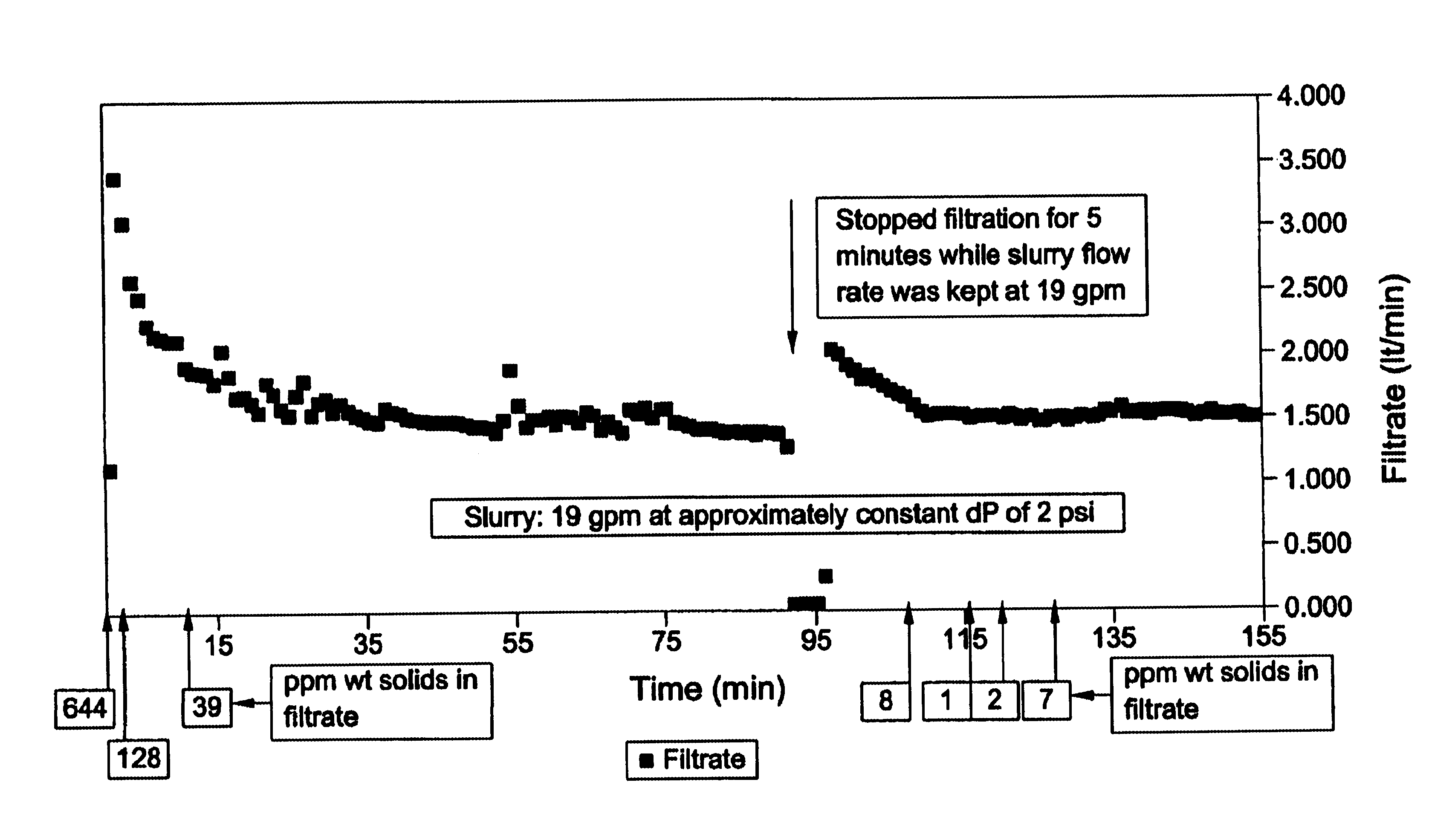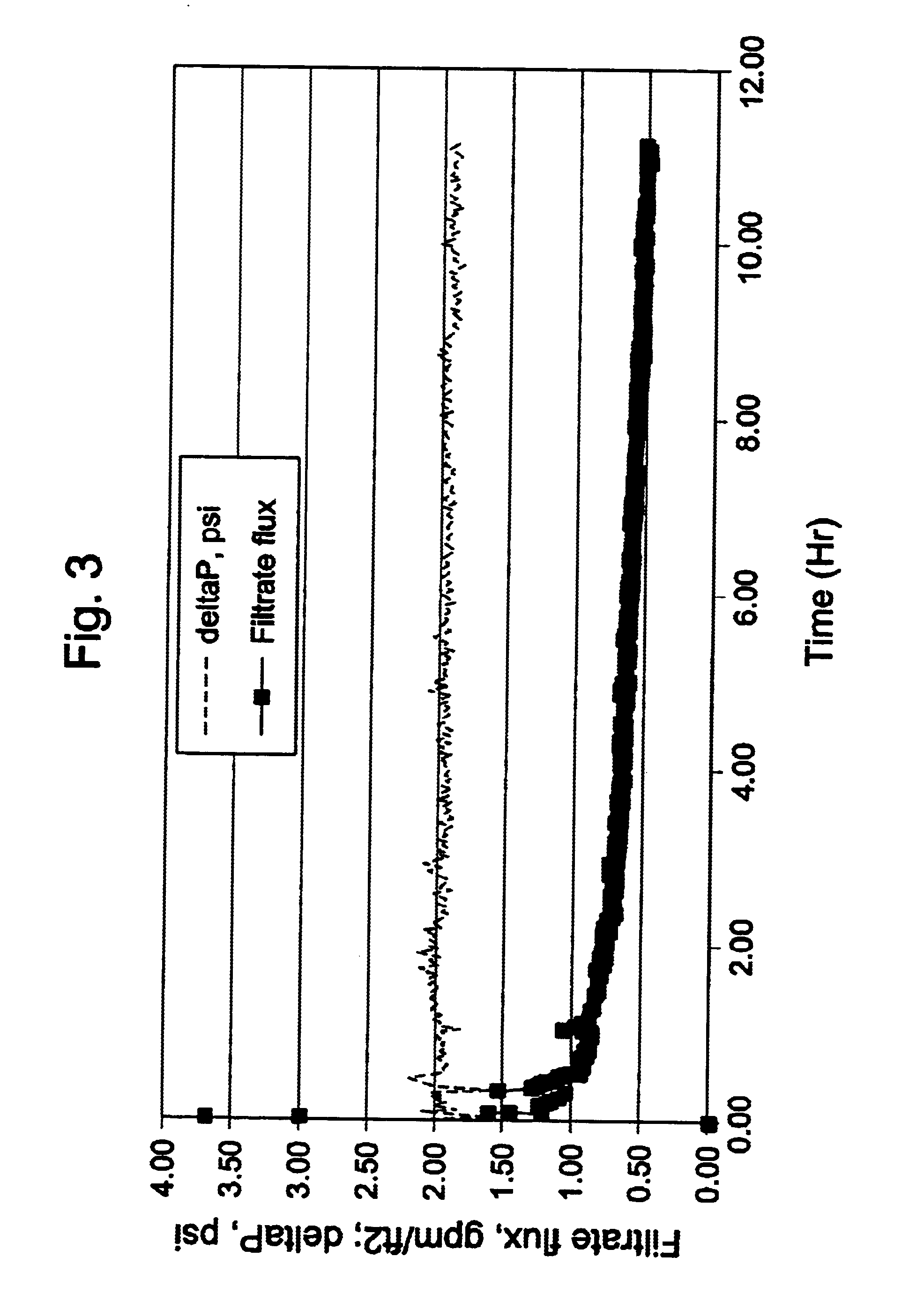Optimized solid/liquid separation system for multiphase converters
a solid/liquid separation and converter technology, applied in separation processes, liquid degasification, filtration separation, etc., can solve the problems of increasing the cost of natural gas, reducing the natural resource of crude oil used for liquid fuels such as gasoline and middle distillates, and presenting technological challenges in transportation. , to achieve the effect of reducing the cost of production, and being efficient in product recovery
- Summary
- Abstract
- Description
- Claims
- Application Information
AI Technical Summary
Benefits of technology
Problems solved by technology
Method used
Image
Examples
examples
[0053]Experiments were conducted using the laboratory setup 500 described in FIG. 2. A slurry was formed in a slurry mixing tank 510. The slurry was a mixture of model wax (n-decane) and solid particles of a cobalt-based catalyst. The cobalt-based catalyst is supported on an alumina material and is active in the Fischer-Tropsch reaction. The solid concentration in the slurry was approximately 23-25% by weight (or about 10% by volume). The catalyst particle size when the catalyst was fresh and first loaded in the slurry mixing tank 510, was in the range of 20 to 150 microns An agitator (not shown) placed inside slurry mixing tank 510 was used to maintain the solids suspended in the slurry. A slurry pump 520 sent a portion of the slurry from slurry mixing tank 510 either back to the slurry mixing tank 510 or to a filtration housing 540. A valve (not shown) was used to direct the slurry flow to the appropriate location. The filtration housing 540 comprises a substrate. The substrate wa...
PUM
| Property | Measurement | Unit |
|---|---|---|
| weight percent | aaaaa | aaaaa |
| number average particle size | aaaaa | aaaaa |
| number average particle size | aaaaa | aaaaa |
Abstract
Description
Claims
Application Information
 Login to View More
Login to View More - R&D
- Intellectual Property
- Life Sciences
- Materials
- Tech Scout
- Unparalleled Data Quality
- Higher Quality Content
- 60% Fewer Hallucinations
Browse by: Latest US Patents, China's latest patents, Technical Efficacy Thesaurus, Application Domain, Technology Topic, Popular Technical Reports.
© 2025 PatSnap. All rights reserved.Legal|Privacy policy|Modern Slavery Act Transparency Statement|Sitemap|About US| Contact US: help@patsnap.com



